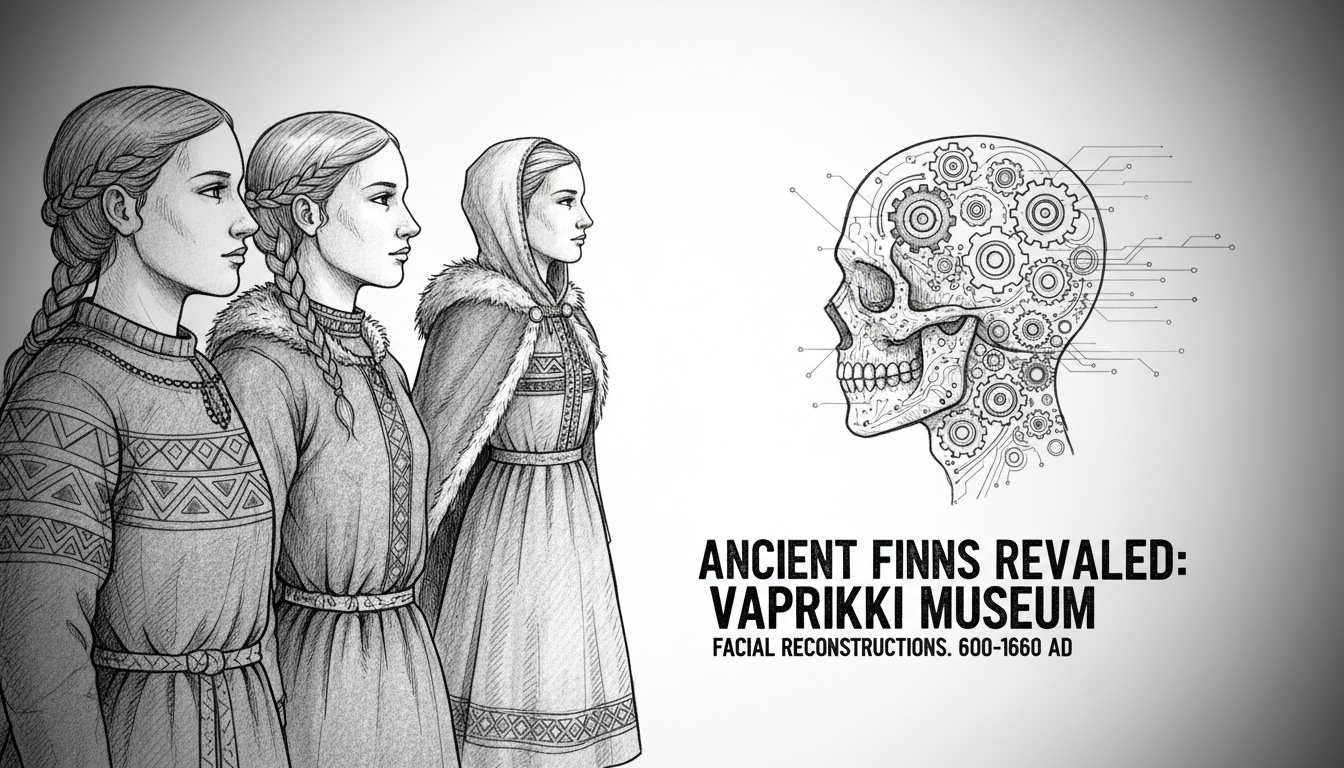A young man with blonde hair, green eyes, and freckles appears so lifelike he could be walking among us today. Yet this individual lived approximately 400 years ago. His remains were discovered on Eestiluoto Island in Sipoo's outer archipelago during the 1960s. Archaeologists have now reconstructed his face using skull analysis and DNA evidence.
The unknown young man represents ordinary people from centuries past. Museum Center Vapriikki in Tampere showcases seven facial reconstructions of ancient Finns in its exhibition Ancient DNA: Key to the Past. These individuals lived between the 7th and 17th centuries across various Finnish locations including Valkeakoski, Tammela, and Porvoo.
Archaeologist Ulla Nordfors suggests the island served as a temporary base for seafarers. The man was buried in a stone cairn, indicating his death didn't go unnoticed. No signs of violence were found on his remains. Different diseases caused many deaths during that period, Nordfors noted in a statement.
Facial reconstruction combines scientific precision with artistic interpretation. Skull structure determines facial shape, while eye position comes from eye socket measurements. DNA analysis reveals skin, hair, and eye color along with features like freckles and dimples. Nose width relies on nasal cavity evidence, but the final shape involves the reconstructor's interpretation.
A new research project at University of Turku will reconstruct faces from 82 skulls recently returned from Sweden. Anthropologist Gustaf Retzius originally took these skulls to Sweden for research in the 19th century. Scottish specialist Hew Morrison, who created Vapriikki's reconstructions, will lead this work.
The exhibition also features reconstructed Bronze and Iron Age clothing from the Tampere region dating to 1150-1250. These elaborate costumes include a woman's dark-toned dress with a blue Baltic-inspired cloak and a man's orange tunic decorated with silk and silver brocade. Exhibition director Maj Meriluoto explained that contrary to popular belief, ancient times were full of vibrant colors, though expensive imported dyes remained inaccessible to common people.
Ancient DNA technology continues advancing. Future reconstructions might rely solely on DNA when skull bones haven't survived, Nordfors explained. The exhibition runs through June 2028 at Vapriikki Museum Center in Tampere.
This exhibition demonstrates how modern science can restore humanity to historical figures while revealing surprising sophistication in ancient Finnish society through both facial features and colorful textiles.

